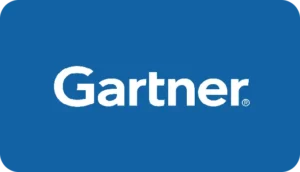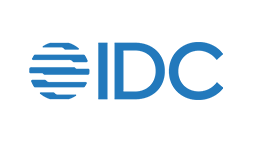Features of Newgen Insurance Underwriting Software
Core Underwriting Engine
- Dynamic rules to facilitate straight-through processing of low complexity submissions and automate key underwriting tasks
- Abstract underwriting rules and complex logic are configured into the system
- Flexibility to change rules according to dynamic business requirements
Underwriting Evaluation
- Automatic policy evaluation to maximize the percentage of straight-through pass cases for quick policy issuance
- Auto-classification of non-straight-through cases and routing of cases to underwriters based on the authority limit
Additional Information Capture
- Access to comprehensive case details to ensure informed decision-making
- Request capabilities for additional documents and information, based on medical or non-medical parameters
Integration and Personalization Capabilities
- Seamless integration with third-party and legacy applications, such as policy administration, CRM, etc.
- Omnichannel, personalized and real-time engagement across all channels, including mobile, web portal, in-person, social channels, and bots
Success Stories
Streamline Your Insurance Underwriting Software for Maximum Performance
A Risk Prediction Model that leverages historical data, risk profiles, and industry benchmarks to assess exposure accurately. It detects anomalies, uncovers policy gaps, and helps prioritize high-impact underwriting decisions.
NewgenONE AI Agents for Insurance
Newgen Solutions for Insurance Underwriting
Life & Annuity Insurance
Bring the power of unified automation to customer journeys, from underwriting and policy servicing to claims management and distribution.
Learn More >Property and Casualty Insurance
Modernize underwriting, policy binding, and claims for P&C insurance with accurate data-based decision-making.
Learn More >Specialty Insurance
Leverage the rules management engine, product configuration, unified dashboards, and end-to-end process automation to boost efficiency.
Learn More >Insurance WorkDesk
Unify content workflows for submissions, risk prioritization, policy generation, and claims settlement using a single pane of glass.
Learn More >Powering Underwriting with Intelligent Insights
Accelerate onboarding, automate underwriting, and ensure fast, accurate claims, while reducing fraud and staying compliant.
Features of an Underwriting Workbench
Automate Communication
Raise additional document/information requests or generate counter offers with system-triggered personalized communications to customers. Manage communications with various stakeholders with template-based policy issuance.
Configurable Rule-engine
Provide adaptable definitions of rule applicability, priority, and expiry. The rule engine supports straight-through processing and controlled access to data.
AI/ML Capability
Ensure better underwriting decisions and improved risk management with AI/ML models. Speed up response time to customers and reduce excess operation costs.
Intelligent Analytics and Insights
Utilize analytics across the value chain to reduce high-cost cases and enable interactive and customized underwriting. Optimize fraud detection in insurance with predictive analytics for effective risk profiling.
Cracking the Code for AI-powered Underwriting: Unified Workbench
Discover how AI revolutionizes underwriting by enabling faster, more accurate decisions through risk-based submission prioritization. With end-to-end automation, real-time data integration, and built-in regulatory compliance, the platform streamlines processes, enhances risk assessment, and reduces errors.
Non-journey Use Cases for Insurance
Lead with an Industry-recognized Platform
Frequently Asked Questions related to Insurance Underwriting
Underwriting in insurance is the process by which insurers assess the risk of insuring a person or entity. This helps determine the terms and pricing of an insurance policy. It ensures that insurance providers can cover potential losses while offering suitable coverage.
Traditionally, underwriting in insurance was manual and time-consuming, leading to longer turnaround times. Today, insurers are modernizing this process with Newgen’s AI-first underwriting platform, which automates data collection, applies advanced risk-scoring models, and ensures compliance with regulatory guidelines. The result is faster approvals, improved accuracy, and a better customer experience.
An insurance underwriter is a professional responsible for evaluating insurance applications, evaluating risk factors, and deciding the terms under which coverage will be offered. Their judgement determines whether a policy is accepted, rejected, or modified.
With Newgen’s AI-first insurance underwriting software, insurance underwriters receive real-time insights and risk recommendations, helping them streamline decisions while maintaining regulatory compliance and improving operational efficiency.
An underwriter in insurance reviews risk factors, determines policy terms, and helps insurers set premiums. This involves reviewing medical history, financial stability, property conditions, or business operations, depending on the type of policy. The underwriter in insurance play a critical role in ensuring that insurance policies are both profitable for the insurer and affordable for the policyholder.
With the growing complexity of risks and the demand for faster decisions, underwriters increasingly rely on technology. NewgenONE Underwriting Assistant simplifies end-to-end underwriting processes by providing underwriters with predictive analytics, automated workflows, and decision-support tools, empowering them to deliver faster and more accurate underwriting outcomes.
The insurance underwriting process involves assessing the risk, verifying information, pricing the coverage, and setting policy terms. This step-by-step approach helps insurers provide tailored insurance solutions while minimizing potential losses.
The insurance underwriting process is made more efficient with Newgen’s intelligent underwriting workbench that enables automation with AI-driven insights, helping insurers quickly validate data, assess complex risks, and manage policy issuance at scale.
Types of underwriting include life insurance underwriting, health insurance underwriting, property and casualty underwriting, and commercial insurance underwriting. Each type of underwriting requires specialized knowledge to assess unique risks.
Newgen’s underwriting platform supports all types of underwriting by offering customizable workflows and scalable data analytics tools that meet the specific requirements of life, health, property, casualty, and commercial insurance sectors.
The definition of underwriting in insurance refers to the evaluation of risks, determining eligibility, and deciding coverage terms. It is a structured process that helps insurers offer protection while managing potential losses.
Newgen’s AI-first insurance underwriting solution goes beyond manual checks by enabling data-driven risk assessments, automated compliance, and faster policy approvals.
Underwriting services in insurance include risk assessment, pricing strategies, policy issuance, and regulatory compliance. These services ensure that insurers maintain profitability while offering appropriate protection.
Newgen’s underwriting platform powered by AI insurers can unify these services through automated workflows, advanced analytics, and real-time compliance monitoring, improving both speed and accuracy.
The role of an insurance underwriter is to review applications, assess risks, and decide on coverage terms. They use data, statistics, and industry guidelines to help insurers provide the right policies to customers.
Newgen’s AI-powered insurance underwriting platform augments underwriters with actionable insights, streamlined workflows, and predictive modeling, enabling them to handle larger volumes of applications with insights that help deliver greater accuracy.
The importance of underwriting in insurance is crucial because it ensures that policies are fairly priced and risks are assessed accurately. Without underwriting in insurance, insurers would struggle to balance coverage and financial sustainability, leading to customer dissatisfaction.
With Newgen’s AI-first underwriting software, insurers can enhance underwriting by automating risk analysis and improving decision accuracy, leading to more equitable pricing and sustainable risk management.
Insurance underwriting works by gathering information about the applicant, analyzing the risk factors, and setting premiums and policy terms accordingly. This ensures fair coverage while managing potential losses for the insurer.
Newgen’s AI-powered insurance underwriting platform helps insurers by integrating external data, applying risk models, and generating recommendations, all within an automated workflow that expedites underwriting without compromising accuracy.
The key features of underwriting in insurance include risk assessment, data analysis, policy pricing, fraud prevention, and compliance with regulatory requirements.
Newgen’s underwriting solutions offer advanced features such as AI-based fraud detection, automated compliance checks, risk profiling, and predictive pricing models, all integrated within the NewgenONE platform, for faster, more accurate decisions.
The commercial insurance underwriting process involves evaluating business-specific risks, reviewing financial statements, identifying exposures, and designing tailored policies to meet a company’s insurance needs.
Newgen’s underwriting platform enables commercial insurers to accelerate this process through automated data ingestion, industry-specific risk scoring, and AI-driven recommendations, helping underwriters assess complex exposures quickly.
Financial underwriting in insurance involves assessing the applicant’s financial health to determine their ability to afford and maintain coverage. It is especially important in life and health insurance policies, where affordability and long-term policy viability are key.
The AI-first underwriting assistant of Newgen provides AI-driven data collection & actionable Insights features to evaluate financial documents, predict long-term viability, and tailor coverage solutions, ensuring that financial underwriting is efficient and accurate.
Types of underwriters include life insurance underwriters, health insurance underwriters, property and casualty underwriters, and commercial underwriters. Each type focuses on specific risks and coverage areas.
Newgen’s AI-first, underwriting platform, built on NewgenONE, supports underwriters across the spectrum of businesses, offering industry-specific templates, data models, and customizable workflows that ensure insurers can address diverse risk profiles with precision.
Artificial intelligence (AI) in underwriting helps insurers analyze large datasets faster, predict risks more accurately, and automate routine tasks. AI-driven underwriting reduces manual effort and makes underwriting faster and more consistent.
Newgen’s AI-powered underwriting solutions harness machine learning algorithms, advanced predictive analytics, and intelligent automation to optimize underwriting decisions, enhance risk assessment, and improve customer experience.
AI for underwriting refers to the use of machine learning algorithms, AI models and data analytics to streamline the risk assessment process, improve accuracy, and reduce processing time for insurance applications.
Newgen’s AI-first underwriting assistant integrates seamlessly with existing systems, providing real-time predictive insights and automated workflows that streamline approvals while ensuring compliance.
The meaning of underwriting insurance is the process of evaluating risks and deciding the terms and conditions under which coverage is provided, ensuring both insurer and policyholder are protected.
Newgen’s AI-powered underwriting software strengthens this process by enabling real-time risk scoring, automated eligibility checks, and policy optimization, ensuring faster and more informed decisions.
The process adopted in underwriting insurance typically includes collecting data, evaluating risk factors, verifying applicant information, determining premiums, and issuing policies.
NewgenONE Underwriting Assistant AI Agent automates these steps, providing structured workflows, advanced data integration, and compliance tools to ensure the process is both efficient and accurate.
An insurance underwriter reviews new and existing insurance applications, analyzes risk factors, ensures compliance, recommends adjustments, and collaborates with sales and actuarial teams to maintain policy accuracy.
With Newgen’s intelligent underwriting platform, underwriters are supported by automated decision tools, risk assessment engines, and workflow integrations that enhance productivity and ensure regulatory compliance.
Insurance underwriters are responsible for assessing risks, setting premium rates, reviewing applications, identifying fraudulent claims, and ensuring compliance with insurance regulations.
Newgen’s AI-driven underwriting platform assists underwriters by providing real-time analytics, automated risk scoring, and fraud detection capabilities, helping them make informed decisions faster and more accurately.
Automated insurance underwriting uses intelligent automation, combining business rules, data analytics, and AI models, to evaluate risks and process applications with minimal manual intervention. It speeds up approvals, reduces human errors, and ensures consistency across policies.
Newgen’s AI-first insurance underwriting solutions insurers can enable straight-through processing, handle exceptions efficiently, and deliver faster, accurate underwriting decisions.
Underwriting in financial services involves evaluating creditworthiness, assessing financial risks, and offering appropriate coverage or loan structures, helping institutions make informed decisions.
Newgen’s underwriting platform supports financial underwriting by integrating credit analytics, regulatory checks, and customizable workflows, helping institutions deliver tailored solutions with speed and precision.
The underwriting software in insurance is a solution that enables users to automate critical underwriting tasks, assess risks associated, and manage the end-to-end policy lifecycle.
Yes. Automation of end-to-end underwriting processes enables insurers to reduce errors, minimize delays and make informed business decisions. By handling repetitive tasks, it frees the bandwidth for underwriters so that they can focus on better compliance adherence, and formulating better policy clauses.
AI in insurance underwriting improves risk assessment, speeds up policy approvals, and reduces manual errors. By analyzing claims history, medical records, and behavioral data, AI provides underwriters with deeper insights for fairer and faster decisions. This not only enhances accuracy but also delivers a smoother experience for policyholders.
With Newgen’s AI-powered insurance underwriting system, insurers can seamlessly combine accuracy with agility, ensuring quicker and more customer-friendly outcomes.
Adaptability and efficiency. Unlike traditional workflows, AI workflows can adjust based on real-time data, spotting anomalies or missing details automatically. They also reduce repetitive manual work, making underwriting faster, more consistent, and reliable.
On NewgenONE, AI-driven workflows bring together intelligence and orchestration, enabling enterprises to scale automation without losing control.
The primary role of AI in loan underwriting is to assess borrower risk more accurately and fairly. AI looks beyond credit scores to evaluate financial behavior, spending patterns, and even alternative data. This leads to quicker loan approvals, reduced bias, and smarter lending decisions.
Newgen’s AI-first loan underwriting system helps financial institutions deliver these benefits with built-in compliance and seamless customer experiences.
The difference between workflows and AI agents lies in intelligence. Workflows follow predefined steps, while AI agents can make decisions, fetch data, and act autonomously. For example, a workflow may flag an incomplete loan application, but an AI agent can proactively gather the missing information and move the process forward.
With Newgen, enterprises can combine AI-driven workflows with AI agents to achieve underwriting that is both structured and adaptive.
AI agents in automated underwriting helps in speeding up the processes. They collect and analyze data, highlight unusual risks, and recommend next steps without waiting for human input. Their ability to adapt to new rules or market changes makes underwriting not just automated, but intelligent and future-ready.
On NewgenONE, AI agents work alongside underwriters to deliver faster, more transparent, and reliable outcomes.



